Short answer: yes, you should head to the ER after you’ve used epinephrine, even if you feel fine. The medication buys you time, but the underlying allergy can still flare up, and a delayed (biphasic) reaction can sneak up hours later.
Short answer #2: If you’re not feeling 100 % or you can’t get to a hospital quickly, dial 911 or have a friend drive you. Emergency staff will keep an eye on you, run a few quick tests, and make sure you’re truly out of danger.
Why Emergency Care Is Still Needed
What does epinephrine actually do?
Epinephrine (adrenaline) is a biological superhero. Within seconds it tightens blood vessels, opens up airways, and gives the heart a short‑term power boost. That rapid “reset” can be the difference between a comfortable breath and a life‑threatening choke.
Can symptoms return after they disappear?
Unfortunately, yes. In about 1‑2 % of anaphylactic episodes a second wave—called a biphasic reaction—shows up anywhere from a couple of minutes to 12 hours later. The first dose of epinephrine wears off in roughly 10‑20 minutes, so monitoring in a hospital keeps you safe from that sneaky rebound.
What do clinicians say?
According to the CDC’s anaphylaxis guidance, every person who receives epinephrine should receive a brief observation period in a medical setting. The recommendation isn’t about “just being cautious”; it’s rooted in data from hundreds of emergency‑department studies that show delayed symptoms are real and sometimes severe.
Are there legal or insurance reasons?
When you’re in the ER, the encounter gets documented. That paperwork becomes a safety net for you—if a reaction does return, you’ll have proof you sought professional care right away. Insurance companies also look favorably on a documented ER visit when they process prescriptions for a second auto‑injector or allergy testing.
Immediate Steps After Injection
How to administer the dose correctly?
Whether you’re using the classic auto‑injector (EpiPen, Auvi‑Q) or the newer FDA‑approved nasal spray (brand name Neffy, released 2024), the steps are the same: remove the safety cap, press firmly against the thigh, hold for 3‑5 seconds, then massage the injection site. The spray is a single puff into one nostril; a second puff in the same nostril can be given after five minutes if symptoms persist.
What to do while waiting for transport?
First, call 911 (or your local EMS) and tell them you’ve used epinephrine for anaphylaxis. While help is on the way: sit or lie down, elevate your legs a few inches, and keep your airway open—no swallowing pills or food. If you have a companion, ask them to note the exact time you gave the dose; that timestamp is gold for the ER doctors.
When is it safe to drive yourself?
Only if you’re absolutely alert, your breathing is steady, and you’re less than five minutes from a hospital. Dizziness, a rapid heartbeat, or lingering throat tightness are red lights that say “call an ambulance.” Remember, the safety of the driver matters just as much as the safety of the passenger.
Do I need to take any other meds?
Antihistamines (diphenhydramine) and corticosteroids are useful adjuncts—but they never replace epinephrine. Give them after the epinephrine dose, and ideally under a doctor’s guidance. If you have an inhaler for asthma, keep it handy; some people need a quick‑acting bronchodilator even after epinephrine.
For people who experience frequent reactions, a prescription for a second auto‑injector (or a spare nasal spray) is standard post‑epinephrine care.
Warning Signs That Definitely Require Hospital Care
What symptoms signal a “severe” reaction?
Watch for any of these: a sudden drop in blood pressure (you feel light‑headed or faint), a rapid weak pulse, swelling of the tongue or lips that makes speaking or swallowing hard, wheezing that won’t quit, or a voice that sounds “tight.” If any of these appear—even after you feel better—head to the ER immediately.
What are “biphasic” or “rebound” signs?
The second wave can look like fresh hives, stomach cramps, vomiting, or new wheezing that starts hours after the first episode. Because the body can release stored mediators long after the initial trigger, a hospital setting lets clinicians watch for these late‑stage surprises.
When does the dose need to be repeated?
If after five‑seven minutes there’s no noticeable improvement—no relief of breathing, no drop in swelling—administer a second dose using the same device. Timing matters; write down the exact minute you give the second shot, too.
What about special populations?
Children under 15 kg, pregnant people, and seniors have a lower threshold for calling the hospital. The nasal spray may not work as well after nasal surgery or in people with polyps, so an injectable is preferred in those cases. The rule of thumb: when in doubt, bring them in.What to Expect at the Emergency Department
How long will I be observed?
Most EDs keep you under observation for 4‑6 hours, which covers the typical window for a biphasic reaction. If you had a severe reaction, the observation period can stretch to 24 hours.
Which tests are done?
Staff will: - Check vitals every 15 minutes (blood pressure, heart rate, oxygen saturation).
- Run an ECG—epinephrine can sometimes provoke tachyarrhythmias like transient atrial fibrillation (see a case report in Cureus).
- Draw a blood sample for serum tryptase, a marker that helps confirm anaphylaxis.
Can I be discharged the same day?
If you’re stable, symptoms haven’t returned, and the doctor feels confident you can manage at home with a clear action plan, you may go home. The discharge packet will include a prescription for a second auto‑injector, written instructions on when to call 911, and a follow‑up appointment with an allergist.Prescription and follow‑up
Most physicians will write a prescription for a second epinephrine device (because the AAAAI’s anaphylaxis guidelines recommend having two on hand) and schedule you for allergy testing within a month. That testing pinpoints the exact triggers so you can avoid future scares.
ADVERTISEMENT
Post‑Hospital Care & Long‑Term Prevention
When can I return to normal activities?
Usually after you’ve been symptom‑free for at least 24 hours and have a doctor’s clearance. If you’re an athlete, talk to your sports physician about when it’s safe to resume vigorous training.How to update my emergency action plan?
Write down the date and time of the last reaction, the dose you gave, and any new triggers you discovered during testing. Keep the plan on your fridge, in your wallet, and on any school or workplace health forms.Should I carry two epinephrine devices?
Absolutely. The first dose may not be enough, or you might need a backup if the first device fails. Carry them in different locations (e.g., one in your bag, one in your car) so you’re not caught without a rescue.Training & education resources
Many pharmacies offer a “train‑the‑patient” session when you pick up a new auto‑injector. Local hospitals often hold free workshops for families, and there are excellent video tutorials on the manufacturers’ websites. The more you practice, the calmer you’ll feel if an emergency really happens.Common Myths & Misconceptions
“If the reaction stops, I don’t need the hospital.”
False. The reaction may look over, but the underlying allergy is still active. Observation catches the rebound before it becomes dangerous.“Only kids need a hospital after epinephrine.”
Wrong. Adults can develop delayed cardiac effects—like the transient atrial fibrillation case mentioned earlier—even if they feel fine at first.“Nasal spray replaces the auto‑injector.”
Not quite. The nasal spray is a great adjunct, especially for those who hate needles, but the injectable remains the gold standard for severe anaphylaxis.“I can reuse an auto‑injector after a false alarm.”
Nope. Once the spring is released, the device is single‑use. Keep a spare ready.
ADVERTISEMENT
Safety Checklist for Future Reactions
- Check vitals every 15 minutes (blood pressure, heart rate, oxygen saturation).
- Run an ECG—epinephrine can sometimes provoke tachyarrhythmias like transient atrial fibrillation (see a case report in Cureus).
- Draw a blood sample for serum tryptase, a marker that helps confirm anaphylaxis.
Can I be discharged the same day?
If you’re stable, symptoms haven’t returned, and the doctor feels confident you can manage at home with a clear action plan, you may go home. The discharge packet will include a prescription for a second auto‑injector, written instructions on when to call 911, and a follow‑up appointment with an allergist.Prescription and follow‑up
Most physicians will write a prescription for a second epinephrine device (because the AAAAI’s anaphylaxis guidelines recommend having two on hand) and schedule you for allergy testing within a month. That testing pinpoints the exact triggers so you can avoid future scares.
ADVERTISEMENT
Post‑Hospital Care & Long‑Term Prevention
When can I return to normal activities?
Usually after you’ve been symptom‑free for at least 24 hours and have a doctor’s clearance. If you’re an athlete, talk to your sports physician about when it’s safe to resume vigorous training.How to update my emergency action plan?
Write down the date and time of the last reaction, the dose you gave, and any new triggers you discovered during testing. Keep the plan on your fridge, in your wallet, and on any school or workplace health forms.Should I carry two epinephrine devices?
Absolutely. The first dose may not be enough, or you might need a backup if the first device fails. Carry them in different locations (e.g., one in your bag, one in your car) so you’re not caught without a rescue.Training & education resources
Many pharmacies offer a “train‑the‑patient” session when you pick up a new auto‑injector. Local hospitals often hold free workshops for families, and there are excellent video tutorials on the manufacturers’ websites. The more you practice, the calmer you’ll feel if an emergency really happens.Common Myths & Misconceptions
“If the reaction stops, I don’t need the hospital.”
False. The reaction may look over, but the underlying allergy is still active. Observation catches the rebound before it becomes dangerous.“Only kids need a hospital after epinephrine.”
Wrong. Adults can develop delayed cardiac effects—like the transient atrial fibrillation case mentioned earlier—even if they feel fine at first.“Nasal spray replaces the auto‑injector.”
Not quite. The nasal spray is a great adjunct, especially for those who hate needles, but the injectable remains the gold standard for severe anaphylaxis.“I can reuse an auto‑injector after a false alarm.”
Nope. Once the spring is released, the device is single‑use. Keep a spare ready.
ADVERTISEMENT
Safety Checklist for Future Reactions
Post‑Hospital Care & Long‑Term Prevention
When can I return to normal activities?
Usually after you’ve been symptom‑free for at least 24 hours and have a doctor’s clearance. If you’re an athlete, talk to your sports physician about when it’s safe to resume vigorous training.How to update my emergency action plan?
Write down the date and time of the last reaction, the dose you gave, and any new triggers you discovered during testing. Keep the plan on your fridge, in your wallet, and on any school or workplace health forms.Should I carry two epinephrine devices?
Absolutely. The first dose may not be enough, or you might need a backup if the first device fails. Carry them in different locations (e.g., one in your bag, one in your car) so you’re not caught without a rescue.Training & education resources
Many pharmacies offer a “train‑the‑patient” session when you pick up a new auto‑injector. Local hospitals often hold free workshops for families, and there are excellent video tutorials on the manufacturers’ websites. The more you practice, the calmer you’ll feel if an emergency really happens.Common Myths & Misconceptions
“If the reaction stops, I don’t need the hospital.”
False. The reaction may look over, but the underlying allergy is still active. Observation catches the rebound before it becomes dangerous.“Only kids need a hospital after epinephrine.”
Wrong. Adults can develop delayed cardiac effects—like the transient atrial fibrillation case mentioned earlier—even if they feel fine at first.“Nasal spray replaces the auto‑injector.”
Not quite. The nasal spray is a great adjunct, especially for those who hate needles, but the injectable remains the gold standard for severe anaphylaxis.“I can reuse an auto‑injector after a false alarm.”
Nope. Once the spring is released, the device is single‑use. Keep a spare ready.
ADVERTISEMENT
Safety Checklist for Future Reactions
Should I carry two epinephrine devices?
Absolutely. The first dose may not be enough, or you might need a backup if the first device fails. Carry them in different locations (e.g., one in your bag, one in your car) so you’re not caught without a rescue.Training & education resources
Many pharmacies offer a “train‑the‑patient” session when you pick up a new auto‑injector. Local hospitals often hold free workshops for families, and there are excellent video tutorials on the manufacturers’ websites. The more you practice, the calmer you’ll feel if an emergency really happens.Common Myths & Misconceptions
“If the reaction stops, I don’t need the hospital.”
False. The reaction may look over, but the underlying allergy is still active. Observation catches the rebound before it becomes dangerous.“Only kids need a hospital after epinephrine.”
Wrong. Adults can develop delayed cardiac effects—like the transient atrial fibrillation case mentioned earlier—even if they feel fine at first.“Nasal spray replaces the auto‑injector.”
Not quite. The nasal spray is a great adjunct, especially for those who hate needles, but the injectable remains the gold standard for severe anaphylaxis.“I can reuse an auto‑injector after a false alarm.”
Nope. Once the spring is released, the device is single‑use. Keep a spare ready.
ADVERTISEMENT
Safety Checklist for Future Reactions
Common Myths & Misconceptions
“If the reaction stops, I don’t need the hospital.”
False. The reaction may look over, but the underlying allergy is still active. Observation catches the rebound before it becomes dangerous.“Only kids need a hospital after epinephrine.”
Wrong. Adults can develop delayed cardiac effects—like the transient atrial fibrillation case mentioned earlier—even if they feel fine at first.“Nasal spray replaces the auto‑injector.”
Not quite. The nasal spray is a great adjunct, especially for those who hate needles, but the injectable remains the gold standard for severe anaphylaxis.“I can reuse an auto‑injector after a false alarm.”
Nope. Once the spring is released, the device is single‑use. Keep a spare ready.
ADVERTISEMENT
Safety Checklist for Future Reactions
“Nasal spray replaces the auto‑injector.”
Not quite. The nasal spray is a great adjunct, especially for those who hate needles, but the injectable remains the gold standard for severe anaphylaxis.“I can reuse an auto‑injector after a false alarm.”
Nope. Once the spring is released, the device is single‑use. Keep a spare ready.
ADVERTISEMENT
Safety Checklist for Future Reactions
Safety Checklist for Future Reactions
| Situation | Action | Who Does It? | When |
|---|---|---|---|
| First dose given | Call 911, note exact time, start monitoring | Patient / Bystander | Immediately |
| No improvement in 5 min | Administer second dose (same route) | Patient / Bystander | ≤ 7 min total |
| Severe symptoms (BP < 90, wheeze, swelling) | Transport to ER (ambulance if needed) | EMS / Family | ASAP |
| After discharge | Schedule allergist follow‑up, refill auto‑injector | Patient | Within 7 days |
Conclusion
Every time you pull that epinephrine device, you’ve just bought yourself priceless minutes. But those minutes are only the beginning of a safe recovery. Head to the hospital, stay for observation, and let professionals watch for a delayed reaction. Keep two devices within reach, practice the injection steps, and have a written action plan that every friend, family member, or coworker can read at a glance.
If you’ve ever felt the panic of a sudden allergic reaction, you know how overwhelming it can be. By following these steps, you turn that panic into preparedness. Share your story in the comments—what worked for you the first time you used epinephrine? Do you have a favorite tip for staying calm while waiting for the ambulance? We’d love to hear from you.
Remember: you’re not alone in this. With the right knowledge, a little practice, and a quick trip to the ER when needed, you can face anaphylaxis with confidence and keep yourself—and the people who love you—safe.

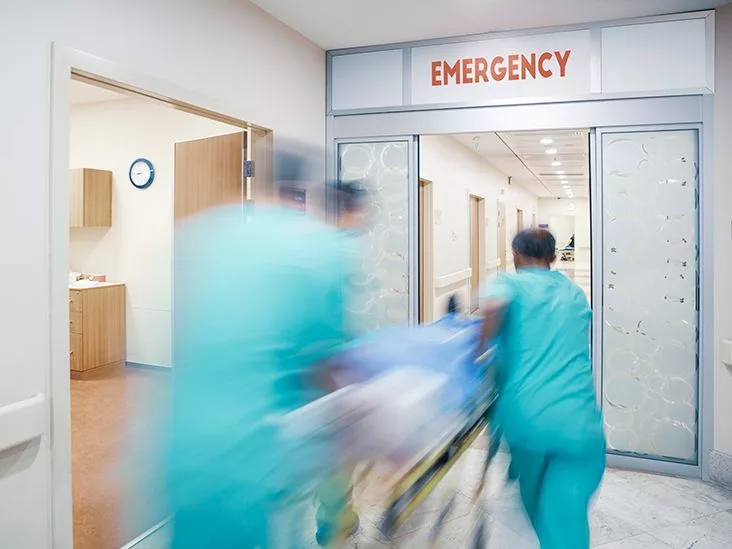


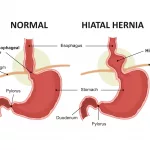
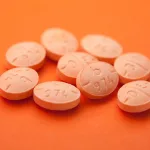
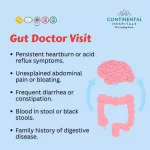



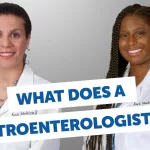







Leave a Reply
You must be logged in to post a comment.